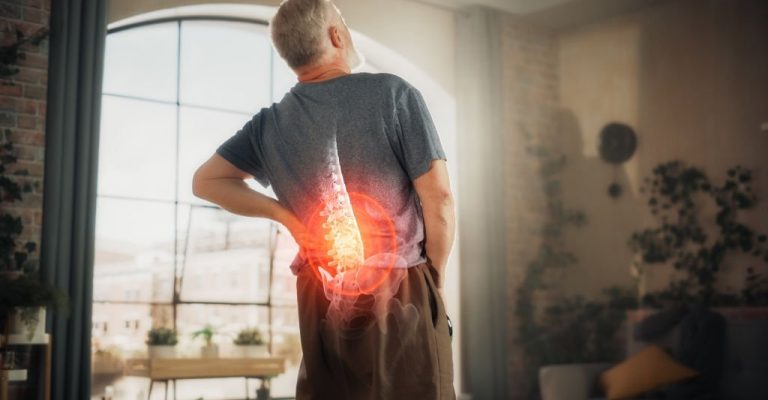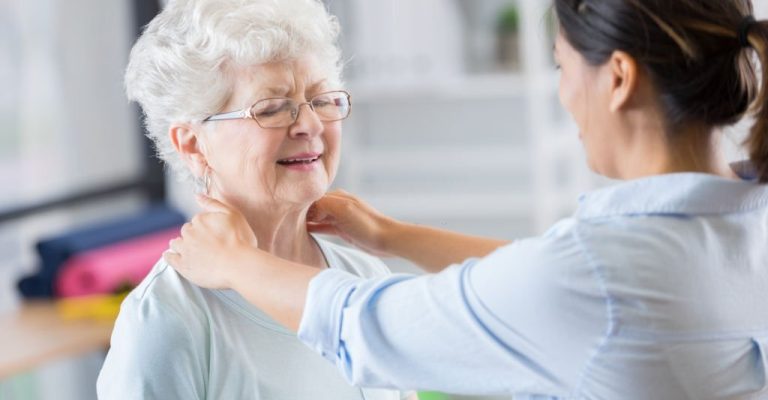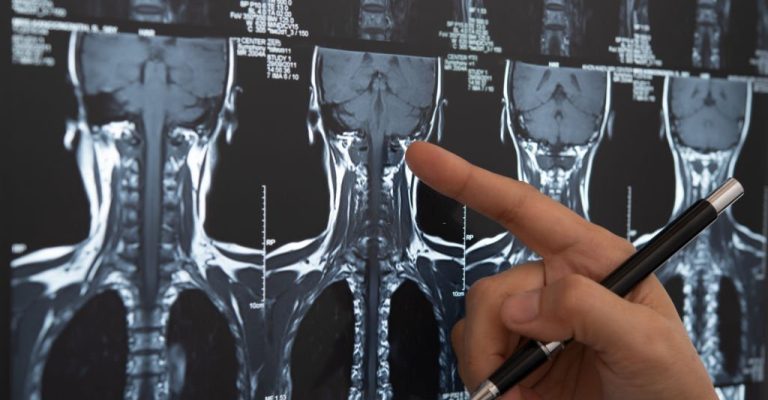
A spinal stroke, also known as cervical myelopathy, is a condition that causes damage to the nerves and other parts of the spine. Many factors, including underlying medical conditions such as diabetes or hypertension, trauma due to accidents or falls, spinal degeneration, tumors or cysts in the spine, injury to the neck area during childbirth, and more, can cause it. This type of stroke typically leads to mobility limitations depending on its severity. Let’s discuss it further.
A spinal stroke is a brain injury in the spine’s nerves, most commonly in the neck area. It can permanently damage these nerves and cause lasting physical impairments such as decreased mobility in your legs or arms and pain radiating through different body parts. Unfortunately, spinal strokes often go undiagnosed due to the lack of awareness.
The good news is that with prompt diagnosis and treatment, most people can recover from a spinal stroke and regain some or all of their mobility. However, if you or a loved one have recently experienced any symptoms of a spinal stroke, it is essential to seek medical attention immediately.
Understanding the condition of spinal stroke is essential for several reasons:
An accurate diagnosis of spinal stenosis is crucial for developing an appropriate treatment plan. Identifying the severity and location of the stenosis can help determine the best course of action, whether it be conservative treatment options or more invasive procedures such as surgery.
Identifying the symptoms of spinal stenosis can help individuals manage their condition. By recognizing the signs and symptoms of the condition, patients can take steps to alleviate discomfort and prevent further progression.
Early diagnosis and intervention can help prevent more severe complications associated with spinal stenosis. Understanding the condition and recognizing the early warning signs can enable patients to manage their condition and avoid potential complications proactively.
Effective spinal stroke treatment can significantly enhance an individual’s quality of life. By understanding the condition and taking steps to manage symptoms, patients can experience increased mobility, reduced pain, and improved function, improving their overall well-being.

Following are some of the most common causes of a spinal stroke:
Our spine may become more susceptible to injury or damage as we age. Degeneration due to age can cause discs between the vertebrae to break down and press on nerves in the spine leading to a spinal stroke. In addition, age-related diseases such as osteoporosis can weaken the spine and make it more prone to injury.
Traumatic injuries such as a car accident or a fall can cause spinal damage leading to a stroke. Additionally, childbirth-related injuries or any direct trauma to the neck area may also be responsible for causing this condition.
Medical conditions such as diabetes, high blood pressure, and stroke can also lead to spinal stroke. Additionally, tumors or cysts in the spine may press on the nerves leading to this condition.
Other factors such as obesity, smoking, and long-term alcohol or drug abuse can also increase your risk of developing a spinal stroke. Symptoms of Spinal StrokeThe most common symptoms associated with a spinal stroke include:
Numbness, tingling, and burning sensation in the arms, legs, or other parts of the body Weakness in the muscles Loss of balance or coordination; Pain that radiates from the neck area to other parts of your body Difficulty walking and difficulty with daily tasks Treatment for Spinal StrokeThe treatment for a spinal stroke will depend on its severity.
It is essential to seek medical attention immediately if you experience any of these symptoms, as prompt treatment can improve the outcome of a spinal stroke.
Intravenous medications may be used to treat spinal stroke, such as corticosteroids to reduce inflammation and anticoagulants or thrombolytics to dissolve blood clots that may have caused the stroke. Pain relievers may also be prescribed to help manage any discomfort associated with the condition.
Surgery may sometimes be necessary to relieve pressure on the spinal cord, remove blood clots or repair damaged blood vessels. Surgery may also be used to stabilize the spine and prevent further damage.
Pain management is also an essential aspect of spinal stroke treatment. Pain medications, nerve blocks, and other interventions may be used to manage chronic pain associated with the condition.
Counseling may be helpful for patients and their families to cope with the emotional and psychological effects of spinal strokes, such as depression, anxiety, and stress. It’s important to note that the treatment options for spinal stroke will vary depending on the severity of the condition, the age and overall health of the patient, and other factors. A comprehensive treatment plan that includes multiple therapies and interventions may be necessary to optimize recovery and improve quality of life.

Rehabilitation is an essential aspect of recovering from a spinal stroke. The goal of rehabilitation is to help patients regain as much function and independence as possible. Here are some rehabilitation strategies that may be used to help patients recover from a spinal stroke:
Physical therapy is a crucial aspect of rehabilitation for spinal stroke patients. Physical therapists may use various techniques to help patients regain strength, flexibility, and balance. This may include exercises, stretches, and range-of-motion activities.
Occupational therapy can help spinal stroke patients learn new ways to perform daily activities, such as dressing, grooming, and eating. In addition, occupational therapists may recommend assistive devices, such as braces, walkers, or wheelchairs, to help patients maintain their independence.
Spinal stroke patients may experience speech and language difficulty due to spinal cord damage. Speech therapists can help patients improve their communication skills, such as speaking clearly and effectively.
Electrical stimulation is a technique that uses low-level electrical currents to stimulate the muscles and nerves. This therapy can help improve muscle strength and function, particularly in patients who have lost movement or sensation due to a spinal stroke.
Aquatic therapy involves exercising in a pool or other body of water. This can be particularly beneficial for spinal stroke patients with difficulty with weight-bearing exercises on land. In addition, aquatic therapy can help improve strength, flexibility, and balance.
Spinal stroke patients may experience emotional and psychological challenges due to their condition, such as depression, anxiety, and stress. Psychological counseling can help patients cope with these challenges and improve their overall quality of life.
Here are some tips on how to maintain quality of life after a spinal stroke:
Spinal stroke is a severe medical condition that can result in paralysis or loss of function in different body parts. Atherosclerosis, blood clots, or trauma to the spinal cord can cause it. Symptoms may include sudden back pain, numbness or limb weakness, and difficulty walking.
Treatment involves managing the underlying cause, addressing symptoms, and providing rehabilitation to help individuals regain function and independence. Early intervention and ongoing rehabilitation can improve outcomes and enhance the quality of life for spinal stroke patients.